
© Elliott Franks. (Click image for larger version)
New Movement Collective
Casting Traces
London, Testbed1
10 July 2012
newmovement.org.uk
Testbed1, near the Thames in Battersea, was once a dockside dairy warehouse. Now co-owned by the architect Will Alsop, it has become an experimental space for performances or exhibitions – with a cocktail bar attached. New Movement Collective took it over for three nights to present a multi-media event that involved eight dancer/choreographers as well as film-makers and musicians.
The Collective, founded in 2009, consists at present of mainly Rambert members, past and present: Jonathan Goddard, Gemma Nixon, Patricia Okenwa, Renaud Wiser, Malgorzata Dzierzon, Robin Gladwin, Anthony Missen and Joe Walkling. Coming together for each project, they find unusual venues and do their own fund-raising and publicity. Ingeniously, for Casting Traces, they managed to obtain rolls of waste newsprint from the Guardian Print Centre; Elin Eyborg, architect and designer, transformed the cavernous space into an ever-changing paper maze.
The inspiration for Casting Traces was by Paul Auster’s New York Trilogy of novels, a kind of non-narrative detective fiction. We spectators – private-eyes, voyeurs, participants – donned white synthetic-paper coats so that we would merge with our surroundings. As we entered, we were presented with a puzzle: shadowy figures loomed and shrank behind paper walls, posing questions of identity and motive. The projected outline of a bakelite telephone hinted at a Hitchcock murder mystery.
Magically, the paper barrier disintegrated and we walked through into clusters of differently sized spaces. A violinist (Linda Jankowska) played within one dangling paper pergola, while the composer, Szymon Brzoska, sat behind a bank of electronic equipment. Bunched together at first, we had to choose between watching duets or trios, backing away from tumbling bodies gripped by fierce emotions.
Projected film (by Annette Porter and Andrew Gaston) of places and buildings gave way to CCTV footage of a crowd of commuters. Moving about, we disturbed encounters between troubled performers. A slew of enigmatic stories was being told through dance to urgent rhythmic music. Half-hidden behind pillars or leaning against brick walls were isolated figures in Tyvek paper suits, nursing private angst, waiting their turn to claim our space. Sometimes only the dancers’ coloured outfits distinguished them from disoriented white-clad spectators, dazzled by beams of light. A demonic solo by Robin Gladwin brought our labyrinthine journey to an end.
I saw the opening performance (of five) and was impressed by how confidently the cast handled the unpredictable movement of the audience, making us follow them or clear out of their way. They preserved their intensity, never making eye contact, caught up in their unsettling world. After they vanished and the overhead lights came on, the mysterious maze had been reduced to swathes of torn paper, the traces of an abandoned performance as messy as those left by a Pina Bausch piece.







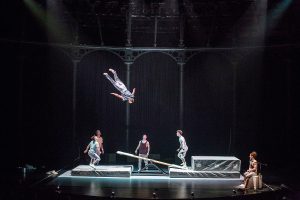
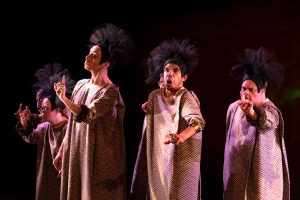
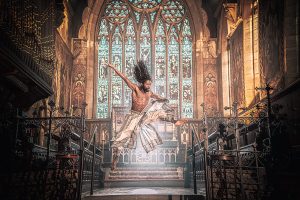

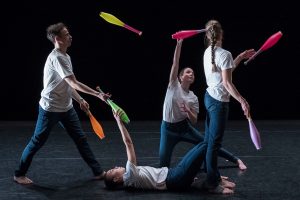
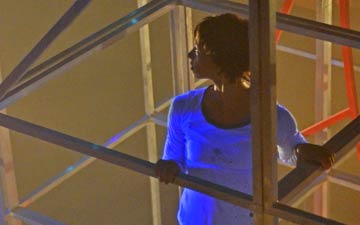
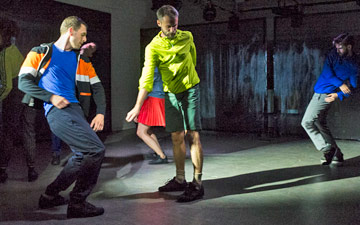


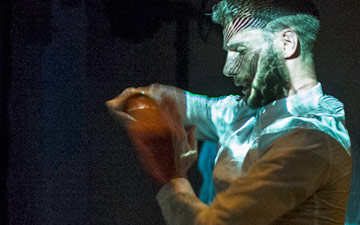
You must be logged in to post a comment.